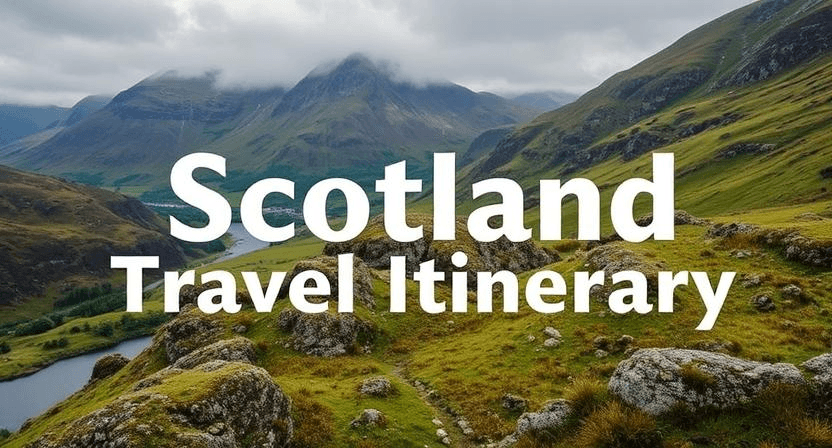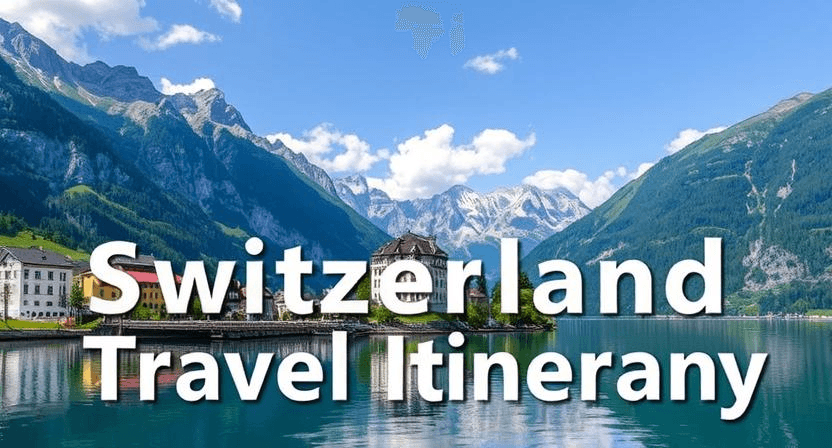Scotland Travel Itinerary A land of raw natural beauty, ancient history, and vibrant culture, Scotland is famous for its rugged highlands, picturesque villages, and age-old castles. So whether it’s Scotland’s medieval history that fascinates you, its misty lochs that charm, or its buzzy cities that excite you, Scotland is a place that offers a journey like no other. This 10-day itinerary for Scotland is designed for American travelers who want to maximize their time, taking you through some of the country’s most recognizable attractions and lesser-known gems.
“Plan your perfect Scotland travel itinerary with must-visit destinations, scenic routes, and unforgettable experiences.
Day 1-2: London – The Royal Capital

Table of Contents
Your adventure in Scotland begins in its capital, Edinburgh. Famous for its beautiful architecture, historical significance, and vibrant culture, Edinburgh is the perfect place to begin your trip.
Arriving in Edinburgh
Scotland Travel Itinerary Several major U.S. cities have direct flights to Edinburgh Airport. When you arrive, you’ll discover that the City has a developed public transport system, bus and tram services, to use as you get around, but walking is probably the best way to explore the heart of this historic City.
Discover Edinburgh’s Royal Mile and Old Town

Day 1: Morning — Edinburgh Castle Start your visit with a visit to Edinburgh Castle, which is on a volcanic rock with city views. The castle is home to the Crown Jewels of Scotland and the Stone of Destiny, both key to the nation’s royal history. Explore the castle’s museums, the medieval St. Margaret’s Chapel, and the famous One O’Clock Gun.
The Royal Mile: From the castle, stroll the Royal Mile. This historic road runs from Edinburgh Castle to the Palace of Holyroodhouse. The lively thoroughfare includes shops, cafes, and historic sites, including St. Giles’ Cathedral and the Museum of Edinburgh. Do take a chance to wander the narrow alleys, called closes, that offer a glimpse into the City’s medieval past.
Explore the New Town and Calton Hill

The New Town: One of the most stunning areas in Edinburgh—this Georgian part of the City is a UNESCO World Heritage site. Stroll down Princes Street, a key shopping area, and explore Charlotte Square, home to lovely gardens and the Edinburgh Georgian House museum.
Calton Hill: If you want beautiful views of Edinburgh, head up to Calton Hill. At the top, you’ll be treated to sweeping views of the City, including Edinburgh Castle, Arthur’s Seat, and the Firth of Forth. The hill is also home to a range of iconic monuments, including the National Monument of Scotland and the Nelson Monument.
Day 3-4: Glasgow: Scotland’s Cultural Parade
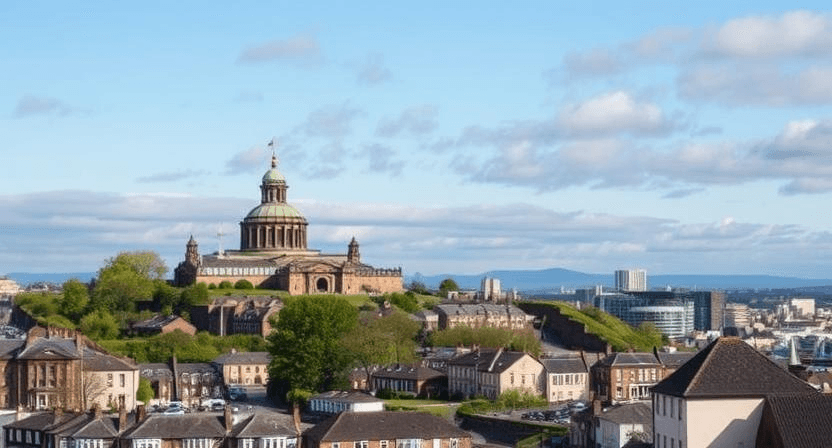
Next, head west to Glasgow, Scotland’s largest City and a cultural powerhouse. The bright lights of Glasgow are one of the City’s famous landmarks. Known both for its cultural scene and its historic architecture, Glasgow provides a great balance to Edinburgh’s old charm.
Arriving in Glasgow

Glasgow is an hour-long train ride or 45-minute car drive from Edinburgh. Glasgow has an extensive public transport system consisting of trains, buses, and the Glasgow Subway.
Discover Glasgow’s Art and Architecture

Kelvingrove Art Gallery and Museum: One of the main attractions in Glasgow is the Kelvingrove Art Gallery and Museum, so start your visit there. Its varied collection includes pieces by hall-of-famers, including Salvador Dalí, alongside displays on natural history, Scottish history, and antiquity.
The Glasgow School of Art: An iconic example of Scottish Art Nouveau architecture, the Glasgow School of Art was designed by the renowned architect Charles Rennie Mackintosh. Architecture fans should also visit the Mackintosh House, which is worth checking out.
Scotland Travel Itinerary The Riverside Museum: If you want something different, check out the very well-regarded Riverside Museum dedicated to transport and technology. Also displayed is an impressive collection of cars, bicycles, and even a historic Glasgow streetcar.
Relax in the Parks

Glasgow Green: If the hustle and bustle of the City become overwhelming, head to Glasgow Green, the City’s oldest public park. It’s a nice area for strolling and has historic sights, including the People’s Palace and the Doulton Fountain.
Botanic Gardens: For nature lovers, Glasgow’s Botanic Gardens provides a peaceful retreat with glasshouses, stunning gardens, and walking paths. It is an ideal spot to relax after a day of sightseeing.
Scotland: when to go
The ideal period for traveling in Scotland is late spring (May-June) through early autumn (September-October). This time of year has mild weather and longer days. For winter sports lovers, too, winter is a time of year to rejoice.
Day 5-6: The Scottish Highlands– Inverness and Loch Ness

Following your Akkora in the cities, drive north to the heart of Scotland’s Highlands. Another region where you could spend a few weeks is the great outdoors, with beaches, beautiful scenery, interesting pages of history, and chances for outdoor adventures.
Arriving in Inverness
The Highland capital, Inverness, is a 3- 4 hour drive from Glasgow or Edinburgh. Situated on the banks of the River Ness, it is an ideal base for discovering its surrounding natural splendors.
Go to Loch Ness and Urquhart Castle
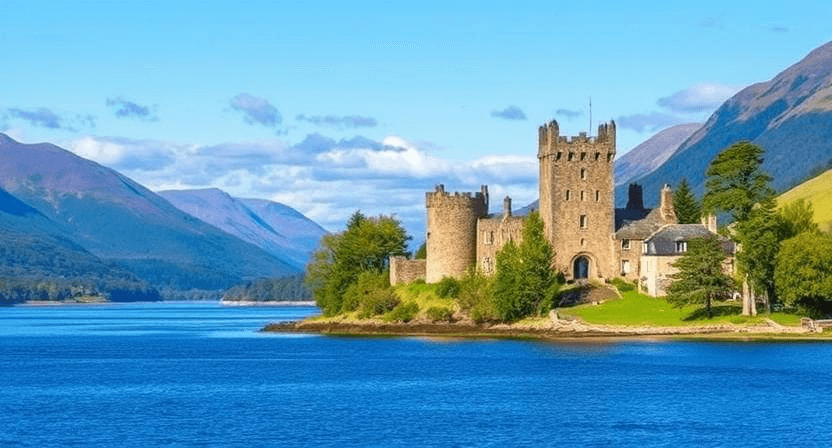
Loch Ness: A visit to the Scottish Highlands wouldn’t be complete without a visit to Loch Ness. This mythical lake is most widely recognized for its fabled Loch Ness Monster, but it’s also one of the most beautiful natural sites. In addition to enjoying the surrounding mountains, you can take a boat tour, which might be your opportunity to spot the elusive creature.
Scotland Travel Itinerary The other is located on a picturesque isle, where we get a view of Urquhart Castle. The ruins give a sense of the country’s medieval past and make for stunning photographs with Loch Ness behind.
Wonder at the Highlands and Cairngorms National Park

Cairngorms National Park: Experience the picturesque beauty of the Cairngorms National Park, home to Scotland’s largest national park featuring stunning mountain ranges, deep glens, and vast forest areas. The park is perfect for hiking, wildlife watching, and outdoor activities.
Inverness and Vicinity: Stroll through Inverness, exploring its quaint shops, cafes, and landmarks, including the Inverness Castle. Another option is to explore the North Coast 500, a popular road trip showcasing the Highland region’s beautiful scenery.
Day 7-8: Isle of Skye – Scotland’s Natural Wonderland
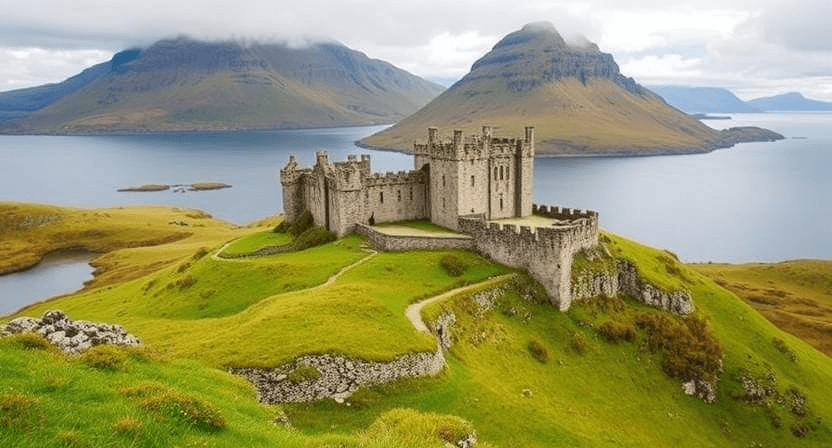
Scotland Travel Itinerary Then venture west to the Isle of Skye, one of Scotland’s most drama-filled and gorgeous destinations. Skye is a must-see for nature lovers, with its rugged landscapes, mystical castles, and coastal beauty.
Arriving in Skye
The Isle of Skye can be reached by road or bus from Inverness. The Skye Bridge connects it to the mainland.
Here Are Things to Do in Skye
The Old Man of Storr: Some of the best things to do on Skye take extra special care of the environment and beauty around them. Make the hike to the top for stunning views of the island and the surrounding waters.
Fairy Pools: If you want something magical, try to see the Fairy Pools, which are located near Glen Brittle. These glimmering, transparent pools, nestled in the shadow of the Cuillin Mountains, are an ideal spot for a quiet stroll or a reviving dip Scotland Travel Itinerary.
Dunvegan Castle: The oldest inhabited castle in Scotland is Dunvegan Castle. The MacLeod Clan lives here, and it has beautiful scenery of the surrounding gardens and waters.
Take your time and enjoy the views
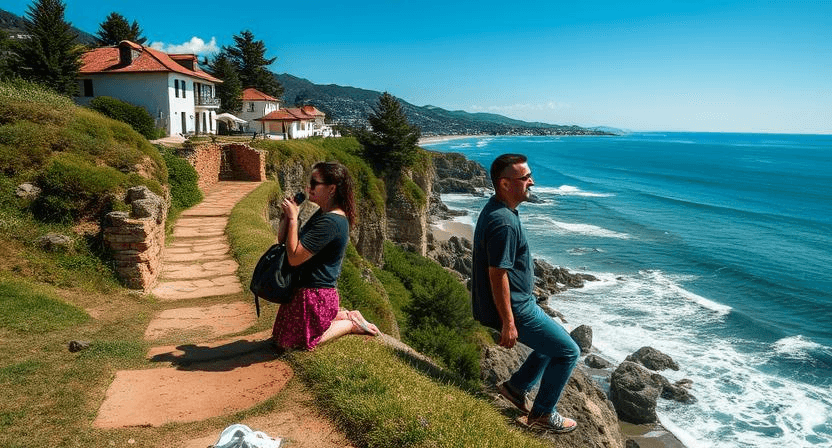
Pause to relax and take in the stunning coastal scenery. Skye’s many quaint towns, including Portree, feature cute shops to wander through, colorful facades, delicious seafood restaurants, and traditional Scottish pubs. You may visit Neist Point, a picturesque lighthouse atop stark cliffs with breathtaking sea views.
Do I need a visa to enter Scotland?
U.S. nationals do not require a visa to enter Scotland, provided their visit lasts less than 90 days for leisure or work purposes. However, you need a valid passport to enter.
Days 9-10: Stirling – Scotland’s Gateway to History
End your time in Scotland in Stirling, famous for its historic figure in Scotland’s fight for independence.
Arriving in Stirling
Stirling can be reached by train and car from both Edinburgh and Glasgow. The City is small but rich with historic sites, which help visitors better understand Scotland’s past.
Visit Stirling Castle and the Battle of Stirling Bridge

Stirling Castle: Tour Stirling Castle, one of Scotland Travel Itinerary most significant historical sites. Among its residents were Scottish kings and queens , including Mary, Queen of Scots. Join a guided tour to learn more about its intriguing history, then check out its grand halls and chapels.
Battle of Stirling Bridge: Near the castle, you can see the site of the Battle of Stirling Bridge, where William Wallace, the celebrated Scottish hero, conquered the English army in 1297. The monument and visitor center have extensive exhibits on Wallace’s life and the battle.
Final Thoughts: Why You Should Scotland Travel Itinerary
With natural beauty, history, and a culture like no other, Scotland will surely leave you with memories that will last a lifetime. Whether you’re wandering the colorful streets of Edinburgh, drinking in the Highland views, or trudging through the wild terrain of Skye, Scotland is a land that will get under your skin.
Scotland Travel Itinerary is an easily-done destination for American tourists, with something to offer every kind of traveler. From bustling cities to peaceful lochs and mountains, Scotland beckons you to take a trip back in time and provides modern convenience. This 10-day itinerary guarantees you’ll see the highlights of Scotland, from its urban landscape to its serene wilds.
Frequently Asked Questions for American Travelers to Scotland
How do I get around Scotland?
Scotland has a great transportation system, including trains, buses, and ferries. However, if you wish to visit some of the more remote areas and the Highlands, renting a car is advised.
Which currency does Scotland use?
The only currencies accepted in Scotland are the British Pound (£) and a few others in limited areas. Major credit cards are widely accepted, and ATMs are available all over the country .
Is travel to Scotland safe?
Yes, Scotland is extremely safe for tourists. And, like anywhere, it’s always a good idea to be aware of your surroundings and follow standard safety practices.
